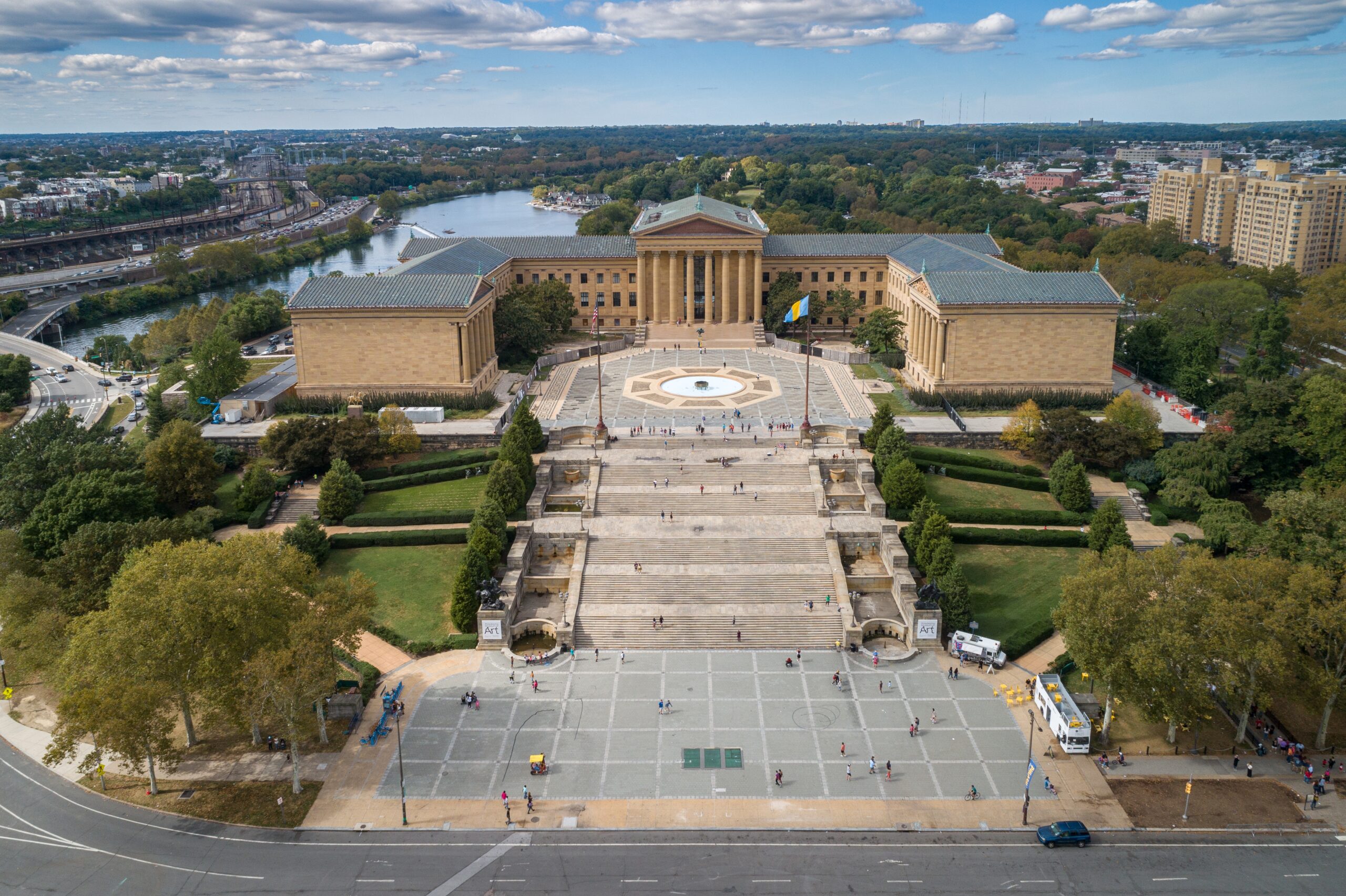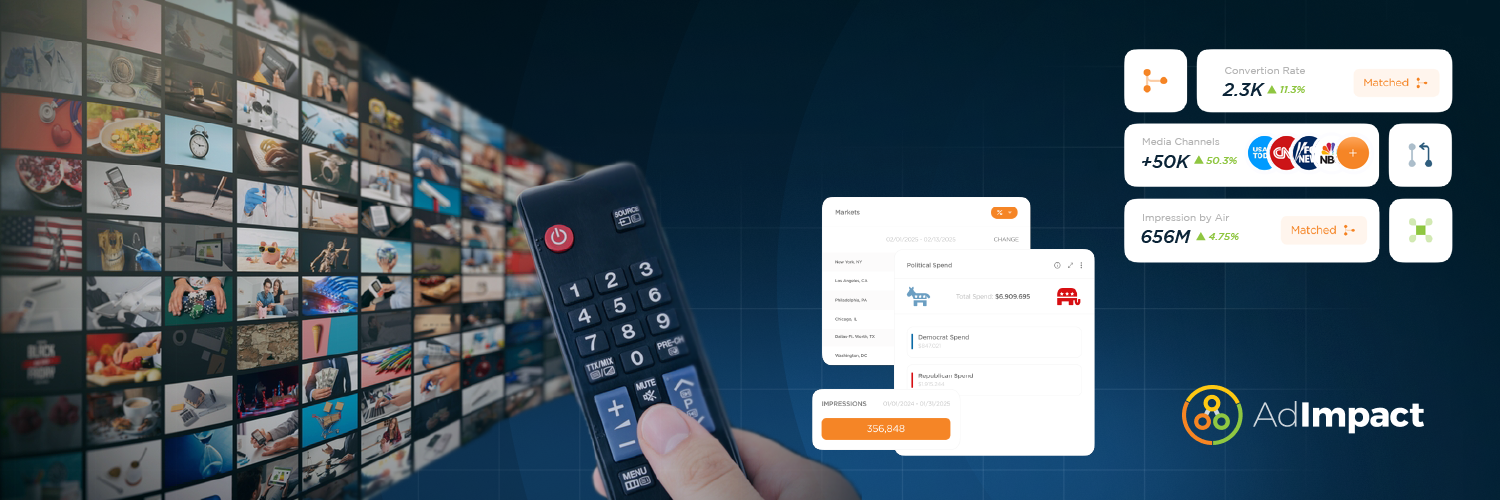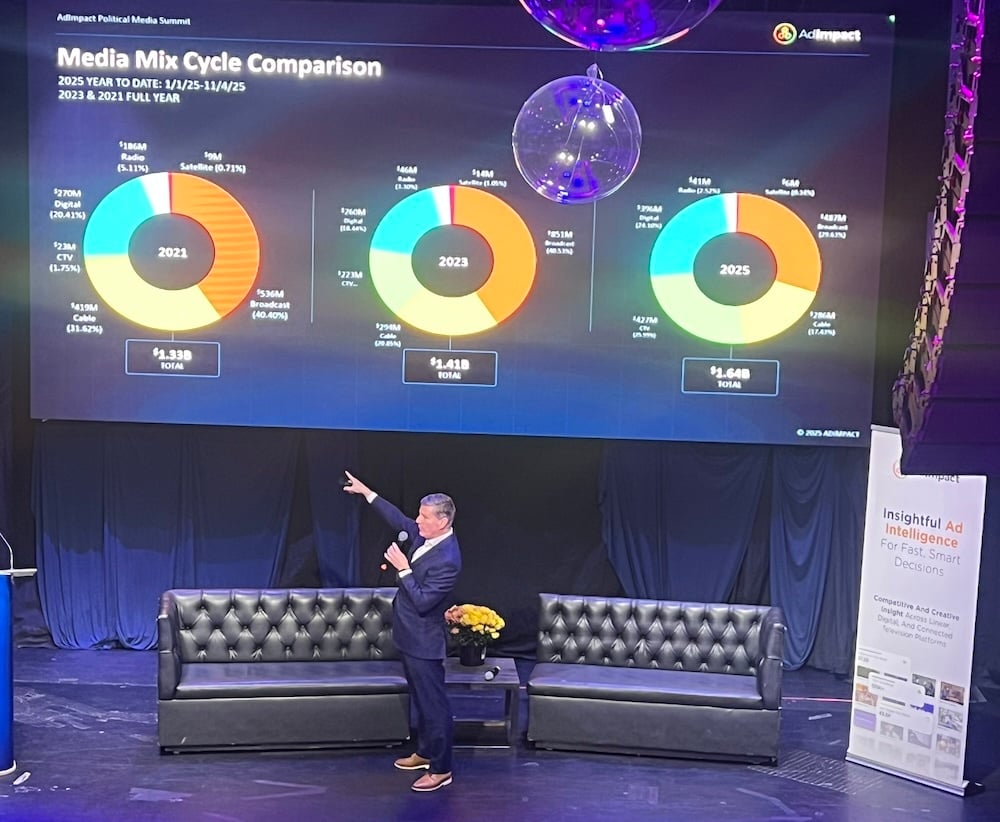Written by Timothy Dias
In 2024, Pennsylvania commanded over 12% of the nation’s political ad spending, becoming the only state on record to surpass $1B in total ad spending in a single year—cementing its status as 2024’s key political bellwether. In fact, looking nationally, Pennsylvania received 32% more spending than the next highest state in 2024, Michigan. The difference alone, $374M, between Pennsylvania and Michigan, is greater than the overall total ad dollars spent in 41 states. This blog will break down the eye-popping $1.2B in political ad spending Pennsylvania received in 2024 and explore the messaging themes voters in the Commonwealth encountered from the campaigns that competed for their votes.

Pennsylvania broadcast television viewers saw over 500,000 political ad airings in 2024. The Presidential race made up more than half of all broadcast airings in the Commonwealth. Despite not airing a single ad until shortly after entering the race in July, Kamala Harris accounted for the most airings of any advertiser, contributing nearly 14% of all statewide political ad airings on broadcast. Harris’ 71,000 airings occurred over just a 99-day period between July 30th and November 5th.

Presidential
Between Super Tuesday, when the Republican Presidential primary ended, and election day in November, Pennsylvania saw $610.2M in Presidential ad spending. During this period, Democratic advertisers outspent Republicans by $41.6M across all media types. This advantage was most apparent in September, when Democratic Presidential advertisers outspent Republicans by $36.5M in the Keystone State. While Democrats held an advantage across linear TV in September, the biggest gap came on CTV, where Democratic advertisers made up 73% of statewide Presidential CTV spending for the month. In October however, Republicans outspent Democrats on broadcast TV by 38% and doubled their CTV spend from September. On local TV, Republicans increased their activity from 40% of total spending in September to 60% in October. Despite being sizably outspent in September, Republican Presidential advertisers edged out Democrats by $2.7M in October. Over the summer months, the party spend advantage flipped back and forth, before Democrats took their September lead. But between the first week of October and election day, Republicans flipped the script, erasing seismic spending deficits from the previous weeks, and claiming an advantage in the critical closing stretch.

Perhaps unsurprisingly, the top-mentioned issues among Presidential advertisers in Pennsylvania were the economy, immigration, and crime—three issues that consistently polled at or near the top of importance to voters in battleground states. Democrats mentioned taxation more than Republicans did, as that was the most mentioned issue overall, but Republicans capitalized on immigration, crime, inflation, and the economy. While Republican ads on the economy attacked VP Harris, including clips of her saying “Bidenomics is working,” a large chunk of Democratic economic ads centered around the claim of “tax cuts for billionaires” under Trump. Of final note, perhaps the most viral spot of 2024 was this ad from Donald Trump, which frequently aired during fall sports programming and featured the line, “Kamala is for they/them, President Trump is for you.” This ad aired over 15,000 times, though it was not in the top 30 of most aired ads of 2024. LGBTQ Rights was the 8th most mentioned issue in Pennsylvania among Republican Presidential advertisers, though not in the top 15 overall issues when including Democratic ads. Abortion was the 7th most prominent issue, mentioned only by Democrats, and ranked as their third most mentioned issue, behind taxation and healthcare.

Senate
Pennsylvania’s 2024 Senate election was the second most expensive Senate general election on record, trailing only this year’s Ohio contest. At $344.9M in general election spending, 2024 was 33% more expensive than the Commonwealth’s 2022 Senate general election. This year, Republicans earned a slight spending advantage over Democrats with Dave McCormick seeing $173.1M in support versus Bob Casey’s $171.7M in the general election. Democrats got out to a spending lead, outspending Republicans each week from early June through mid-August. After this point though, Republicans outpaced Democrats through election day, with both parties spending roughly equal weekly amounts for the first three weeks of October. Overall for 2024, Bob Casey was the sixth highest spending non-Presidential candidate, while WinSenate’s Pennsylvania spending was the fifth highest statewide total for a non-presidential advertiser.

On the messaging side, Republican advertisers hammered their bread-and-butter issues for 2024. Their top-aired issues were immigration, inflation, Joe Biden, crime, and taxation—all issues on which they consistently polled the highest. Republican advertisers tried to link Casey to the top of the Democratic ticket and the economy, including this ad, using Harris’ answer from ABC’s The View, on how she is different than President Biden. The ad claimed that Casey was “always stuck with [Biden and Harris].” On the Democratic side, advertisers’ top issues were China, abortion, Wall Street, illegal drugs, and taxation. A large focus and cross-section of these ads tended to tout Bob Casey’s bipartisan record in the Senate working on fentanyl issues and being tough on China, while McCormick’s Wall Street ties positioned him as soft on China. Overall, Republicans aired over 7,000 more broadcast ads than Democrats did in the general election.

House
Pennsylvania also hosted two of the ten most expensive U.S. House general elections in 2024. PA-08 and PA-07 ranked eighth and ninth respectively. Seventy-three percent of all statewide House spending went to these two districts. Both of these districts were rated as toss ups, according to Cook Political Report, and both featured Democratic incumbents who would lose their seats.

Looking first to PA-08, incumbent Matt Cartwright (D) received $19.7M in ad support compared to $16.2M for his challenger Rob Bresnahan (R). Cartwright saw roughly even support between his campaign ($9.2M) and group support ($9.9M). For comparison, Rob Bresnahan saw $11.1M, or 68% of all spending, come from groups, led by Congressional Leadership Fund with $7.3M. In addition, Bresnahan saw $2.3M in coordinated or hybrid buys with the NRCC. Cartwright’s campaign was the highest-spending advertiser supporting him, followed by House Majority PAC, with $6.3M. In the 7th District, incumbent Susan Wild (D) received significantly more ad support than her challenger, Ryan Mackenzie (R). Wild’s campaign outspent Mackenzie’s $6.1M to just $739K, a margin of nearly 9-1. Overall, Wild received $22.0M in total ad support versus $13.3M for Mackenzie. Among House toss up races, PA-07 had the fourth largest party spend discrepancy advantage for Democrats. In the three races where Democrats outspent Republicans by a larger margin, the Republican candidate lost, putting Mackenzie’s win into perspective.
In addition to these two districts, Cook Political moved PA-10 to toss up status on October 18. Accordingly, in the final two weeks of the 2024 campaign, PA-10 saw more spending than PA-08 did. Democrat Janelle Stelson received $9.9M in ad support, compared with incumbent Scott Perry (R) at $8.9M. The race did warrant attention from the national House committees however, with Congressional Leadership Fund and House Majority PAC both investing over $2M in the race.
Downballot
Excluding Presidential, Senate, and House elections, over $100M was still spent on downballot Pennsylvania races and issues in 2024. $23.8M was spent in the general election for Attorney General, the most expensive downballot state election. Looking elsewhere, general elections for State House received over $37.0M, and those for State Senate saw $17.6M. At the State House level, Democrats had a nearly 2-1 spend advantage overall, and a 3-1 advantage in the critical period after Labor Day.

Looking Forward
What does the future of Pennsylvania’s political ad spending look like? While it will have gubernatorial, U.S. House, and downballot contests in 2026, there will not be a Senate race to draw in hundreds of millions of dollars. And while voters may be happy to see more ‘normal’ advertising on their TVs in two years, one group sure isn’t: local broadcasters. In both 2022 and 2024, Philadelphia and Pittsburgh ranked in the top ten U.S. markets for political spending, with Philadelphia being 2024’s top broadcast market. As for 2028, who knows what the Presidential battleground map will look like four years from now. While it would be unlikely for Pennsylvania to fall too far from its place on the campaign trail, it wouldn’t be unprecedented. As we wrote about previously, Florida led all states in 2020 presidential general election spending and saw less than 1% of that amount in 2024.
Interested in a breakdown of the most expensive Senate election on record? Read our coverage of Ohio’s 2024 Senate race here.
-1.png)









